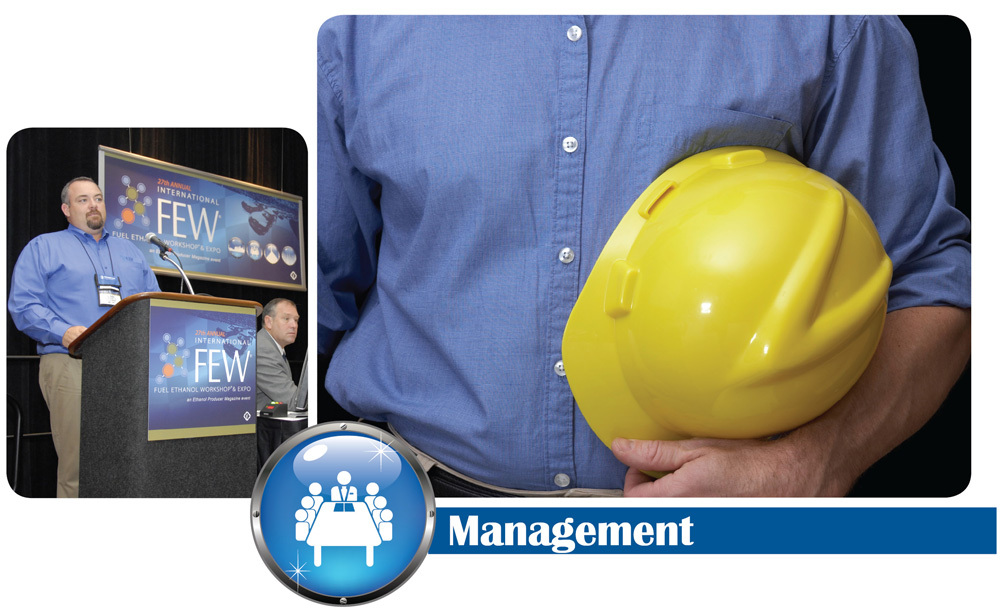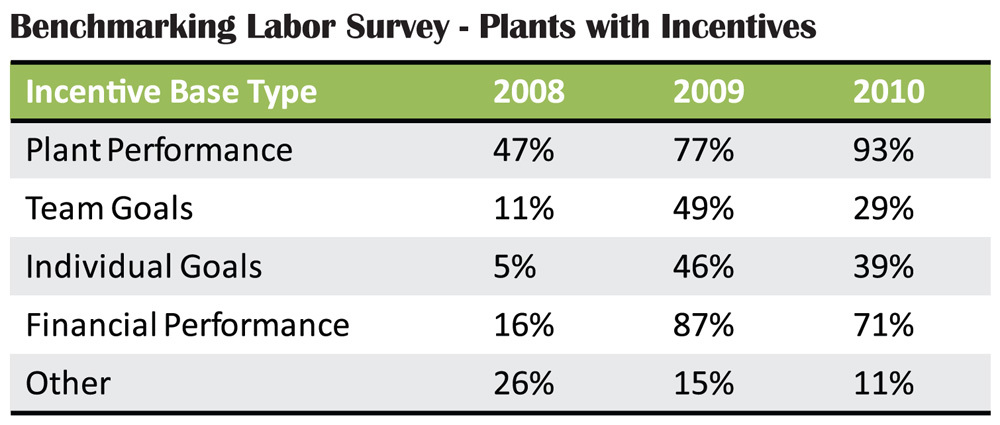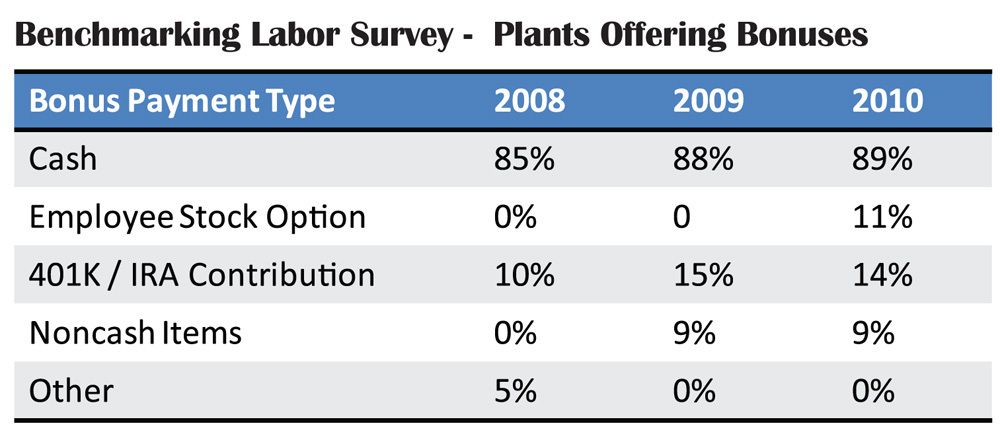2011 FEW Review - Track 2 Management: It's Not Just About the Money







July 20, 2011
BY Holly Jessen
It’s a good idea for employers to research how their organization’s salary and benefits plan stacks up to the competition. For ethanol plants, that means what other ethanol production facilities, as well as other employers in their geographical region, offer their staff. What is in an individual employee’s paycheck, however, is hardly the end-all be-all of what makes him or her a hard-working and satisfied member of the team.
Two speakers, Rob Southern, a human resources consultant for Kennedy and Coe LLC, and Paula Emberland, a business analyst for Christianson & Associates PLLP, addressed this topic during a panel presentation held June 29 at the FEW. Southern characterized it this way. “It’s hiring the right people, getting the right people in the right positions, treating them fairly, developing them and giving them feedback, providing strong leadership and recognizing and rewarding their contributions,” he said.
Southern zeroed in on the importance of proper training for supervisors and management. That could include attending seminars, taking advantage of webinars or free online training content and even assigning that person a mentor. “This is really too vital to be left to chance and sometimes it does get left to chance, I think,” he said.
He gave the example of a situation where a stellar employee that has never been a supervisor or manager is promoted from within the ranks. Putting someone with no management experience in a management position without any training can be a recipe for disaster—not to mention the difficulties of someone managing people who used to be their peers. “We put people into positions, being a supervisor or manager, and really don’t equip them … for those roles,” he said.
Beyond that, it’s absolutely critical that the right people are put in management positions in the first place. A good manager needs to be caring, competent and engaged, staying in touch with his or her employees and showing that they value them, Southern said. That means showing concern for employee well-being and giving open and honest feedback in a constructive way. That kind of manager gets results. “They get commitment,” he said. “That is, the employee wants to commit, versus compliance—they have to. As we all know, those are two significantly separate situations.”
Advertisement
Advertisement
Training isn’t just important for those in management positions, however. Southern recommended fostering an environment of continuous learning. Employers might want to make career and advancement goals a part of the employee review process. In addition, they should offer all employees training opportunities on any of the tools they use to do their job. “They’re going to be more efficient, they’re going to be more effective, with less frustration in their job,” he said.
Another important step in retaining employees is taking the time to let them know when they have done a good job. This is something that frequently gets lost in the shuffle of a busy schedule. Southern said it could be as simple as a quick comment or an email. He also suggested that the compliment be specific, describing what they did that was positive, rather than just a general good job, pat on the back. Expressions of gratitude can also go to teams, rather than just individuals. For example, Southern mentioned a cookout or a team-building event away from the workplace. “There’s lots of creative things that you can do to help build the team,” he said.
He also talked about giving employees the chance to give their input into what’s happening and help identify areas for improvement in the workplace. “Give them a say in how things are done,” he said. “It makes a huge difference.” This could happen during a team meeting or through an anonymous employee survey, which is a great tool to measure how engaged employees are in the business. “It really gives you a good pulse of what’s going on with your workforce,” he said.
Emberland’s presentation focused on bonus and incentive programs, an area in which Christianson & Associates gathers statistics as part of its benchmarking program. Although the two words are often used interchangeably, a bonus is extra pay for good performance while an incentive encourages a certain behavior from employees but does not have to be financial. Like Southern, Emberland mentioned company events either for employees alone or including their families, tickets to a ball game, happy hour at a bar or any number of ways to recognize and reward employees. “There’s a lot of employees out there that just like a pat on the back,” she said. “You need to figure out what’s going to motivate your team.”
A bonus or incentive program does not have to be complicated, she said. She gave examples of programs used by ethanol plants that participate in the benchmarking program and stressed that each company should find what works for itself. One plant provided a 1 percent bonus for zero lost time hours, 2 percent bonus based on yield, 1 percent based on energy savings and 1 percent based on the plant’s production level—adding up to 5 percent of a production team members annual salary. Another way to do it, separately or together with the previous type of bonus program, is to give employees percentage bonuses based on the company’s annual net income. The key is to think through carefully how the program will work, how much money it will cost the company and when the bonuses will be paid out. The next step is to make sure employees understand how it will work. It’s also vital that the goals are actually achievable. “The goals need to be realistic and they need to be measurable,” she said. “There’s nothing worse than feeling like you can ever achieve that goal.”
Advertisement
Advertisement
There are a lot of myths out there about bonus and incentive programs. The first is that it automatically boosts morale. In fact, if it’s not structured correctly, it can have the opposite effect. Often companies turn to bonuses and incentives when they are having trouble with morale, but that move alone won’t fix the problem. “Take a look deeper as to what is going on with your company if you are struggling,” she said. “There’s no employee or bonus incentive program that is going to fix poor hiring or bad management practices.”
Another myth is that bonuses or incentives will show that the company is generous. That’s not always the case either. “From the employee perspective, what they see is the fact that the company is expecting more from me. I need to work harder in order to achieve what they’re expecting from me,” she said.
Others have the mistaken idea that bonuses or incentives will always boost productivity and motivate employees. If employees aren’t provided with the correct resources and tools, it could actually work against productivity. Another thing to be careful of is workplace competition. It’s important to remember that with competition, there will be winners, yes, but there will also be losers.
That’s not to say that bonus and incentive programs can’t be a good thing, if structured correctly. A company whose bonus and incentive program isn’t working should scrap it and start over, Emberland recommended. Once it’s working as it should, a bonus and incentive program can serve to get employees’ attention, help them feel more like a part of the team and align them with the goals of the company.
Jay Beckel, the director of process safety management for ERI Solutions Inc., also spoke during the panel discussion about keeping employees safe once they have been hired. The moderator for this panel presentation was Walt Wendland, CEO and President of Golden Grain Energy LLC.
—Holly Jessen
Upcoming Events





